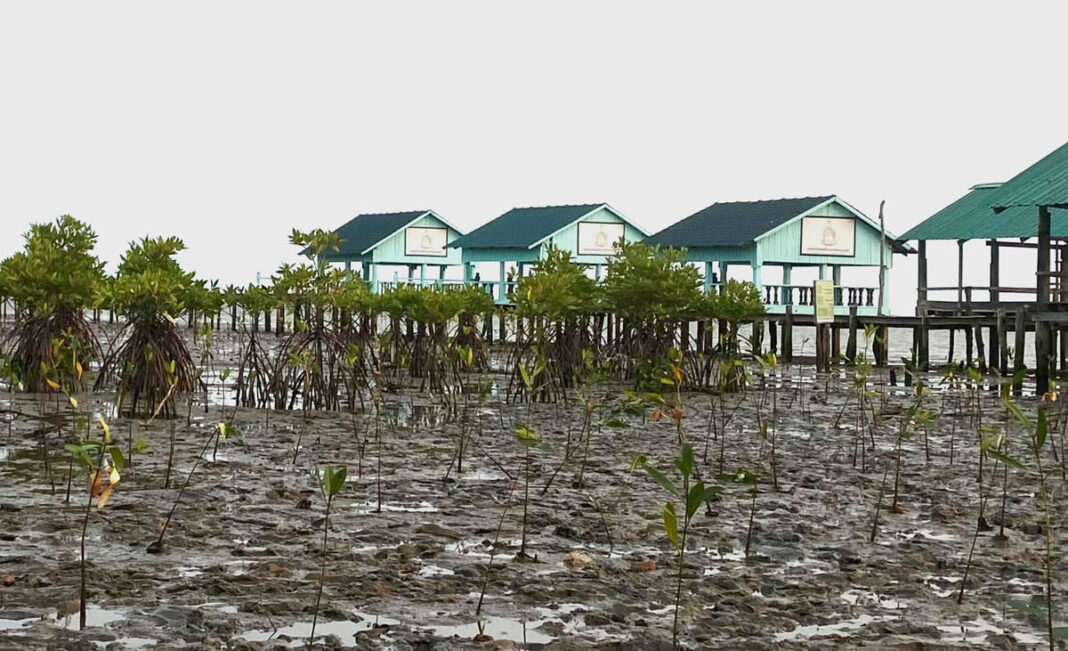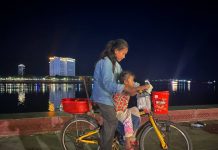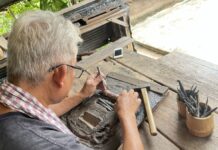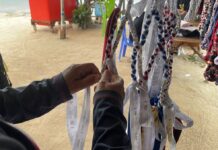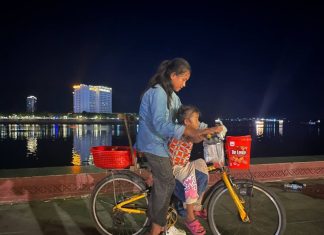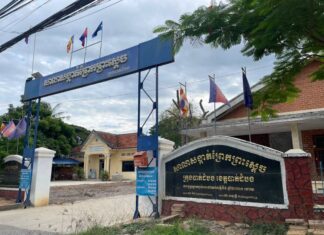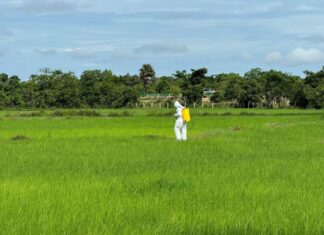Standing near a string of modest wooden cabanas on Cambodia’s southern coast, Soem Him casts an uneasy look across 40 hectares of reforested mangroves — his life’s work.
The 57-year-old community leader has spent nearly two decades planting mangrove trees at Trapeang Sangke, a long, thick, stretch of flooded forests in Kampot province on the Gulf of Thailand. The project began in the early 2000s with just a few dozen trees, and it has since grown to include a fishing village and ecotourism resort that support dozens of families.
Sart Botuma, a journalism trainee at Newsroom Cambodia, spoke to Soem Him about the importance of mangroves, the power of community, and the uncertain future of Trapeang Sangke.
Q: Why mangroves?
Mangrove forests provide immense benefits to the community and the environment. The forests support a habitat rich in biodiversity, including fish, shrimp, crab and other species that provide livelihoods for fishers in our village and neighboring communities. The mangroves protect against rising sea levels, and they clean pollutants and toxins from the sea. One hectare of mangroves can absorb significant amounts of carbon dioxide. For this reason, mangrove forests are essential.
Q: How many trees do you plant every year?
We plant about 40,000 in Trapeang Sangke in a single year. It takes about three to four months for the trees to firmly take root.
Q: What kind of work do the mangroves provide?
We sell mangrove saplings for 2,500 riel to local customers and 4,000 riel to foreign buyers. We make roughly 30% profit on each sale. Our costs include planting supplies, labor and transport. With the proceeds, we assist the elderly and disadvantaged. Some families cannot afford school books and materials, so we help them. We use money from the sapling business and the ecotourism business for that. Another thing we fund is crime prevention patrols, to stop the illegal destruction of mangroves.
There are never enough funds for all we want to do, and we are constantly asking the government and foreign donors for additional help. In addition to supporting our residents, the community also needs development.
Q: What are the biggest challenges the community faces?
Forest loss. Powerful interests are destroying the trees in the name of development. This results in the loss of fishing grounds, the loss of revenue, and the loss of opportunity. With fewer prospects, residents are forced to migrate in search of work. The future of our village is uncertain.
Q: What do you say to the young people?
The Trapeang Sangke mangrove forests belong not only to us. They are a critical contribution to the environment and the nation. They support a community of fishers and a way of life for dozens of families. They are an important tool in the fight against climate change. We need everyone to protect it, for our community and for future generations.


